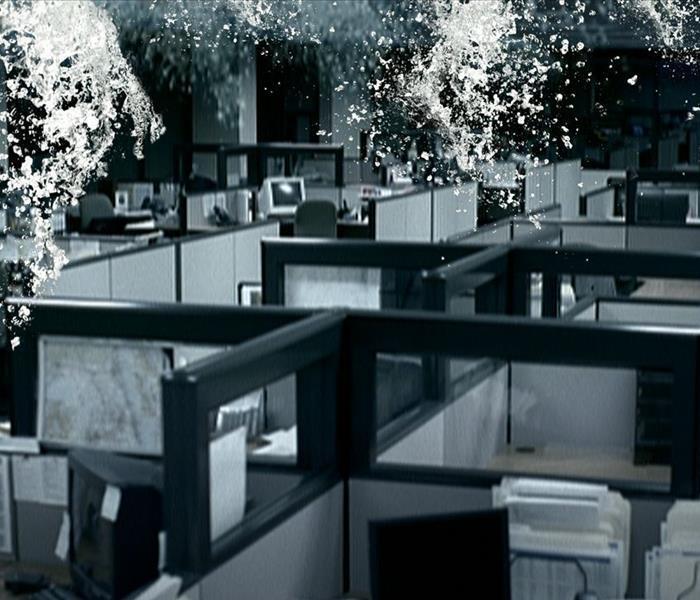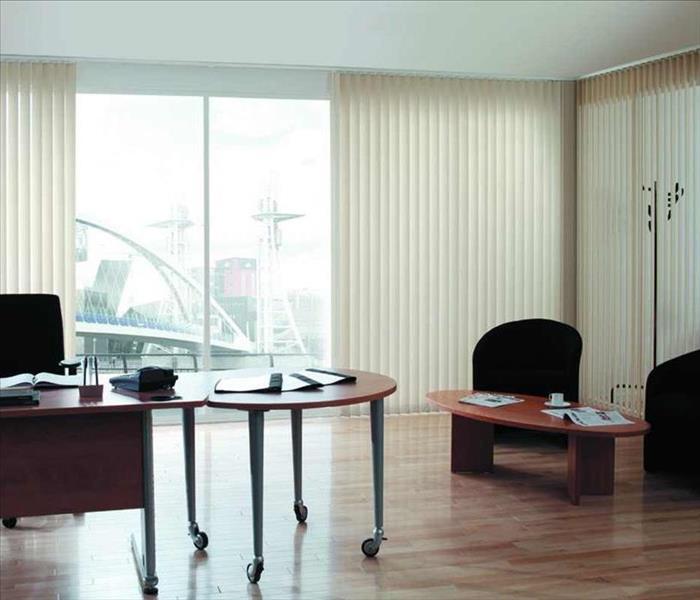Archived Commercial Blog Posts
Disaster Preparedness for a business
12/22/2020 (Permalink)

Did you know that 40% of small businesses will go out of business after a disaster? More often than not, a business owner is so occupied on the opening and upkeep of the business; they don’t find much necessity in focusing on unlikely and uncontrollable disasters that could potentially affect their business. Due to this, 40% of these small businesses will not open their doors after an emergency. With the life changing impacts that a disaster can have on a business, it is important to be prepared in this situation. Having a disaster preparedness plan can’t prevent the disaster; however, it can increase the likelihood of your company opening back up, after the disaster occurs. Some things you can do to be prepared is keeping company records on a network, as well as hard copies. In the case the hard copies get damaged, you will still be able to access them on a network. Moreover, having a communication plan to employees, vendors, and customers is smart. It’s best to plan for worst case scenario disasters. If your physical location is out of commission, you should have a separate plan to address all your customers, vendors, and employees. Third, consider a plan to keep operations running during the repair process. Make sure all your employees are aware and in the loop; therefore they can help and make sure they are up to par with the operations. Fourth, consider potential threat. Depending where you live, you may face different threats. Analyze different situations and plan if X were to go wrong, we can do Y. Lastly, routinely practice drills. Train your crew on how to use the preparedness plan effectively. Each person should know their specific responsibilities and roles, and be trained for it. Much like fire drills, implement the preparedness plan. Though it may seem like a waste of time, its better to be prepared than to not be.
Commercial Drapery and Blind Cleaning
5/20/2020 (Permalink)
SERVPRO excels at cleaning fine fabrics and intricate pieces using wet and dry cleaning methods. We inspect and test fabrics to determine which of our systems five cleaning methods is suited best to your fabrics. A good rule of thumb is to clean drapes approximately every 2 years. Though the average person may think they only need to be cleaned with they’re dirty, depending on your HVAC system, whether or not smokers reside in the house, and other factors – drapes may not show soil for up to six years. The oily atmospheric soil will gradually cause the fabric to deteriorate. Often, direct sunlight is unjustly blamed for this. The life of your draperies can potentially be tripled by getting them professionally cleaned; which is relatively inexpensive compared to the cost of replacing them.
Decluttering and spring cleaning your office
5/20/2020 (Permalink)
Spring time has become a fundamental time of year to clean and declutter. Not only your residence, but your place of business too. The cold winter months keeps everyone cooped up inside and clutter starts to grow. Not only will it make the work environment better, a clean and welcoming environment helps to attract more clients. If you are not sure where to begin with decluttering and cleaning – here is a list you can start from.
Windows – Interior and exterior. It’s so simple, yet crucial as it can make a huge difference.
Landscaping – This is the exterior presentation of your business. Make sure it stays groomed and prevent waiting for the plants to get out of control, before taking care of it. Additionally, it is a good opportunity to plant some flowers and add a little bit of color.
HVAC – Its best to test the system every now and then to ensure it is working correctly. Additionally, due to the fact they are not often cleaned regularly – it can cause pest infestations in the ducts, or mold problems. Moreover, it removes all the dust and debris and increases the air quality.
Flooring and Carpets – As people come in and wipe their feet on the carpet, dirt begins to pile up. Though you may not always be able to see how dirty the carpet is, it is important to maintain it so no spots become stains.
Reorganization – Make sure to file away all of last year’s things that you may no longer need. Organize closets and storage areas that do not get tended too throughout the year. You can even de-clutter the desk drawers and computers.
Indoor Air Quality in your Business
5/22/2018 (Permalink)
Sick Building Syndrome: In the 1970’s sick building syndrome became apparent as groups of people displayed similar symptoms after having spent extended periods of time in buildings with poor air quality. Good judgment and immediate attention can correct the situation and save you money in the event of litigation. People most at risk include, but are not limited to Infants & Children, Pregnant women, Elderly, People with compromised respiratory systems or asthma / allergies, and those with weakened immune system.
Control Moisture and Reduce Mold - Act within the first 24 to 48 hours *
- Correct any water leaks or standing water.
- Remove standing water under cooling coils or air handling units.
- Properly maintain humidifiers, if used.
- Replace wet or visibly moldy insulation materials.
Proper Maintenance Saves Money
Estimated made by the World Health Organization say that poor indoor air quality costs $60 billion in employee sick leave and lost production.
Part of your responsibility to the tenants, workers and students who work and play in your buildings includes proper maintenance and prompt response to any situation that can cause illness or health concerns. SERVPRO of Poway / Rancho Bernardo is available when it matters!




 24/7 Emergency Service
24/7 Emergency Service



